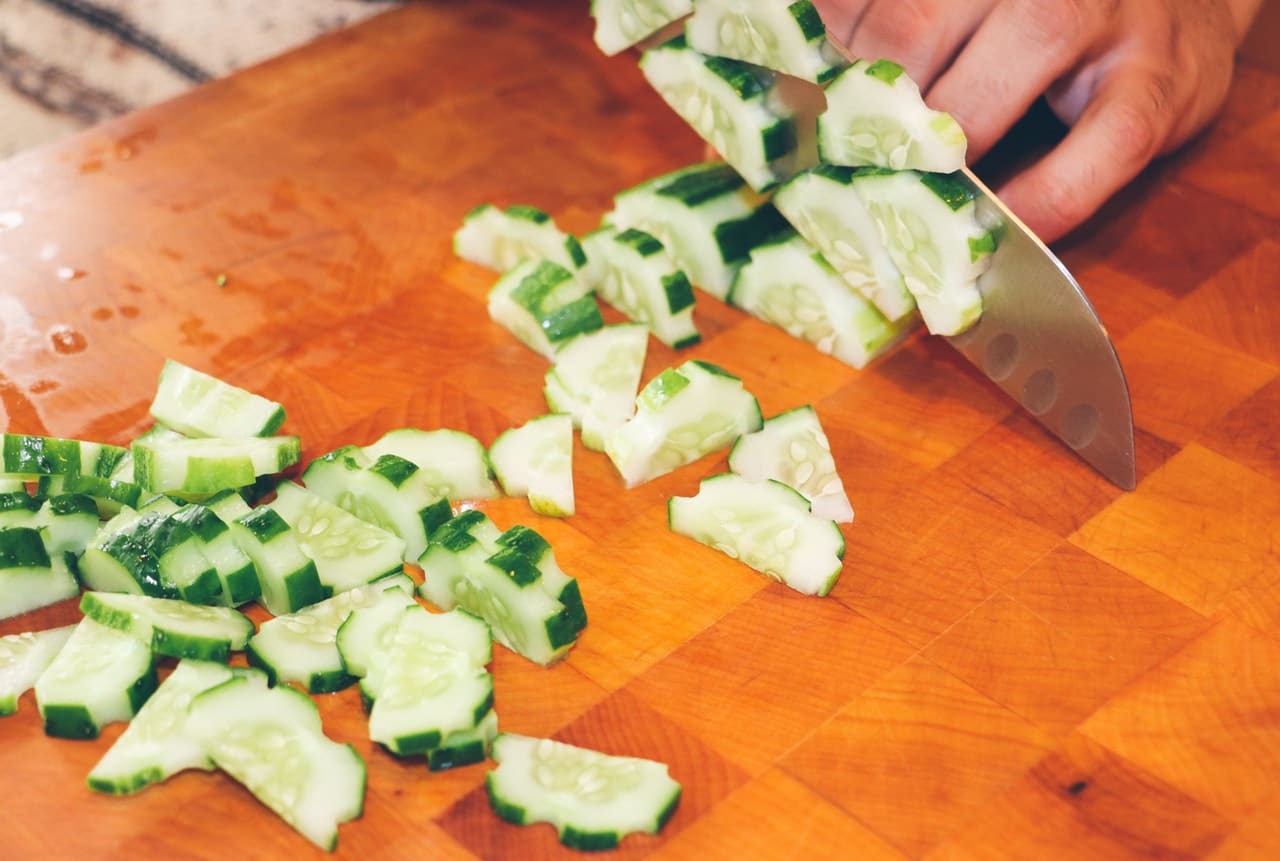Mainly, all cutting boards perform the same function: they act as stable surfaces for food preparation. We use cutting boards so we don’t have to use the kitchen counter directly, as that surface could easily harbor dust and human pathogens.
However, people are often confused about the best cutting board material. With COVID-19, the Wuhan virus is still running rampant around us, and homemakers and people, in general, need to know the basic hygienic principles in preparing food. Part of that effort requires knowing how to use cutting boards properly, to avoid contamination with human pathogens like the coronavirus.
Wooden Cutting Boards
Should we use a wooden cutting board to cut meat and fish? If you are going to ask us if this is an ideal practice, then the general answer would be no, because the wood tends to absorb moisture and other juices from the food that we prepare.
So if you do not clean your cutting boards frequently, you should avoid cutting meat and fish on your wooden cutting boards. It is recommended that you use wooden cutting boards on the following items only: different kinds of cheese, cooked meats (this includes poultry and seafood, like fish), vegetables, fresh fruit, and all types of bread.
You might be wondering: why is it alright to slice cooked meats on the same surface that is used to prepare fresh fruit? Well, cooked meats have significantly lower quantities of bacteria that can be harmful to human health.
This view is supported by Sana Mujahid, Ph.D., of Consumer Reports: she says that it is better to have a separate cutting board for all manners of meat, and another board for food items that are usually eaten as they are, like bread.
Keeping your wooden cutting boards free from germs can be easy if you know how to do it. The recommended disinfection agent for wood is not bleach, but quaternary disinfectants made of ammonia.
Quats are correctly used not just to sanitize but disinfect surfaces. Disinfection requires a chemical agent to cover a surface for a while. Rinsing the chemical off will ensure that only an allowable amount of residues will remain on the cutting board.
This will guarantee that the cutting board is safe again for use in food preparation. To determine how long you should keep your board submerged or covered in a quat disinfectant, simply follow the instructions on the label. Take note that quats come in different formulations and for various purposes. You will be okay with a quat that is formulated for kitchen use or general use.
As for knife marks, which are a problem because they can harbor bacteria and other pathogens, you must sand your wooden cutting board when they become too numerous.
If you have a thick cutting board made of hard rock maple or teak, chances are, you can sand down the knife damage and emerge with a brand new cutting board.
This is one other perk of using wooden cutting boards, though not everyone knows how to sand wood at home. But if you do, and you have the tools, you should try it, especially if you have an expensive wooden cutting board.
Are Plastic Cutting Boards Better?
If we look at the guidelines of the Department of Agriculture, there is no mention that plastic cutting boards are explicitly better than wooden cutting boards.
What the DA does state is that bamboo cutting boards absorb less moisture or water overall than hardwoods, and they also have a more robust surface. What this translates to is that bamboo cutting boards will resist knife damage and will also naturally repel water or moisture better than hardwood cutting boards.
Plastic cutting boards should be treated as being on the same level as wooden cutting boards. These are not perfect surfaces. Over time, knife marks will create tiny spaces on the surface of a plastic cutting board, which may cause the board to harbor bacteria and viruses.
Studies also show that they tend to be the iffiest of cutting boards if they are not maintained and disinfected correctly. Dishwashing them might not be a good idea either, as dishwashing may not provide the right level of cleaning.
If you use plastic cutting boards at home, it is best to wash them by hand with hot, soapy water. After washing with soap, you may also want to disinfect them with some bleach solution.
Simply combine a tablespoon of bleach with one gallon of water and use this solution to flood the surface of your plastic cutting boards. Let the bleach disinfect the surface of the plastic cutting boards for a few minutes, before rinsing everything again. This will ensure that even the parts of the board that have some knife damage already will not become a source of contamination.
On the bright side, plastic cutting boards are recommended for cutting and preparing different kinds of meat. They are ideal because plastic is not porous, and the board basically cannot absorb any of the juices from the meat.
Grab a thick and durable BPA-free plastic cutting board if you don’t have a dedicated board yet for preparing beef, pork, poultry, and fish.
Just make sure that when you begin seeing grooves and cuts on the plastic (like a lot of them), that you immediately discard the cutting board and replace it with a new one.
This is the most necessary precaution, especially nowadays that we are facing viruses like COVID-19. COVID-19, like other members of the flu viruses, can persist on different surfaces outside the human body for days at a time. Keeping all your boards sanitized is an excellent way to ensure that your home is relatively clean and free from human pathogens.

